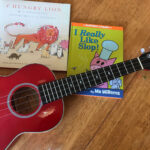Beyoncé Knowles-Carter, a name synonymous with pop music royalty, has been captivating audiences since her Destiny’s Child days. Known for “girl power” anthems like “Bills, Bills, Bills,” “Independent Women,” and “Survivor,” Destiny’s Child, and later Beyoncé’s solo career, have often been celebrated for messages of female empowerment. Even acknowledging tracks like “Cater 2 U,” which present a more submissive narrative, her overall image leans towards strength and independence. From attempting the iconic “Single Ladies (Put a Ring On It)” dance to singing along to catchy hooks like “to the left, to the left,” Beyoncé’s impact on pop culture is undeniable.
However, alongside the accolades, Beyoncé has also faced criticism. Controversies like appearing in a skin-lightening ad for L’Oreal and the “blackface” incident in a L’Officiel fashion spread highlight a complex and sometimes contradictory public persona. Beyoncé embodies a duality: a promoter of feminist ideals through all-female bands and empowering songs, yet simultaneously participating in styles, lyrics, videos, and choreography that can be interpreted as racialized and sexualized self-objectification. This complexity is especially relevant when examining her 2011 single and music video, “Run the World (Girls).”
Released amidst discussions about female body image and empowerment, particularly in the wake of a controversial Psychology Today article criticizing black women’s attractiveness, “Run the World (Girls)” arrived with a potent visual message. Coming on the heels of her “Move Your Body” video supporting Michelle Obama’s “Let’s Move” campaign, which celebrated diverse body types, “Run the World (Girls)” seemed poised to further solidify Beyoncé’s image as a champion of female strength and body positivity. The song and video promised a powerful statement about women taking control. Yet, a closer examination reveals a more nuanced, and perhaps problematic, message.
Visual and Thematic Analysis of “Run the World (Girls)” Video
Set in a dramatic, post-apocalyptic landscape, the music video for “Run the World (Girls)” immediately establishes a scene of upheaval and female dominance. Beyoncé appears as a messianic figure, riding a dark horse, arriving to what seems like a scene awaiting her leadership. Two women, one emerging from a cage and another in a crucifixion-like pose, are presented as if awaiting liberation. This imagery sets a tone of dramatic transformation and suggests Beyoncé as the catalyst.
Post-Apocalyptic Setting & Messianic Imagery
The post-apocalyptic setting itself is significant. It paints a picture of societal breakdown, implying a need for a new order. Beyoncé’s messianic entrance atop a horse reinforces this idea, positioning her as a savior figure who will lead women into this new world. This visual narrative immediately grabs attention and sets high stakes for the message of the song.
Choreography and “Power Moves”
The video showcases diverse styles and an army of women, clad in lingerie, representing various races and ethnicities. They confront figures who appear to be a mix of street gangs and police in riot gear. This confrontation can be interpreted as a battle against societal constraints and patriarchal forces attempting to suppress female sexuality and power. The choreography, featuring Beyoncé’s signature “bootilicious” moves and intricate footwork, is undeniably powerful and visually arresting. These “power moves” and bold fashion choices, however, echo elements of camp and theatricality, reminiscent of Broadway musical numbers like Sweet Charity’s “Hey, Big Spender!” This raises questions about the sincerity versus performative nature of the presented female empowerment. Is it a genuine call to action, or a stylized spectacle?
Feminist Message or Sexual Spectacle?
Beyoncé’s vision in “Run the World (Girls)” suggests that hyper-femininity itself is the source of women’s power, capable of establishing a “New World Order” under her glamorous leadership. However, this message is delivered through a highly sexualized performance, presented to an implied male audience. This raises concerns about whether the power being asserted is truly for women themselves, or if it remains within the framework of the male gaze. The lingerie-clad women and overtly sexualized choreography, while potentially reclaiming feminine items as symbols of power, simultaneously risk reinforcing objectification. The video flirts with feminist themes, possibly even referencing SlutWalk protests and feminist debates surrounding female sexuality, but its message remains ambiguous.
Comparison to Willow Smith’s “21st Century Girl” – A Different Approach to Girl Power
In contrast to Beyoncé’s approach, Willow Smith’s “21st Century Girl,” released around the same time, offers a different perspective on “girl power.” Smith’s video, featuring grandmotherly wisdom from Cicely Tyson, focuses on creativity, non-violence, and building a better world through ingenuity, without relying on overt sexuality or male validation. “21st Century Girl” promotes female empowerment through inner strength and community, a stark contrast to the sexualized prowess presented in “Run the World (Girls).” The absence of thigh-high stockings and male onlookers in Smith’s video underscores a different vision of female agency.
Conclusion: Unimaginative Vision of Female Empowerment
Ultimately, “Run the World (Girls)” presents a clichéd and sexualized “Battle of the Sexes,” where power is derived primarily from sexual and physical dominance. The final image, where the women “salute” the men, further complicates the message, suggesting a potential return to male authority once the performance of female power concludes. While the idea of girls running the world is inherently appealing, Beyoncé’s vision in this song and video feels limited and unimaginative. True female empowerment requires a more profound and creative reimagining of societal structures, one that moves beyond sexual spectacle and embraces diverse forms of strength and agency. “Run the World (Girls)” sparks conversation, but its vision of female power remains, for some, a missed opportunity.

